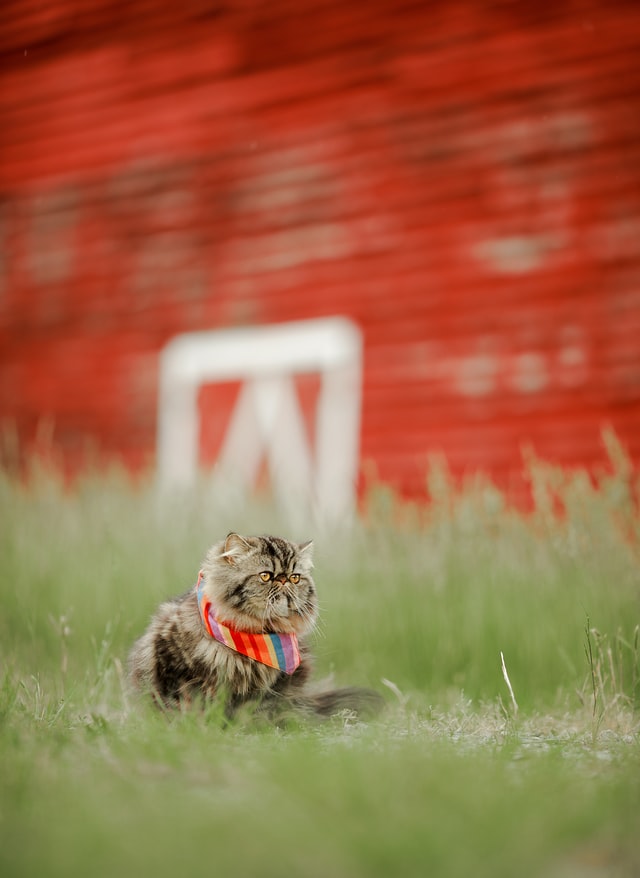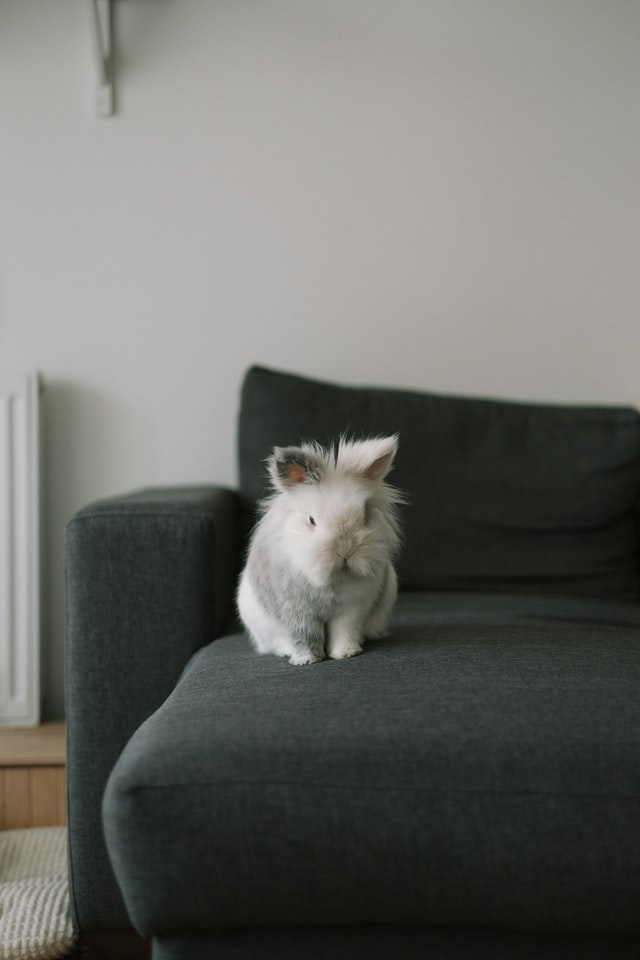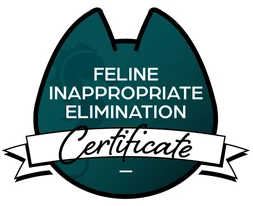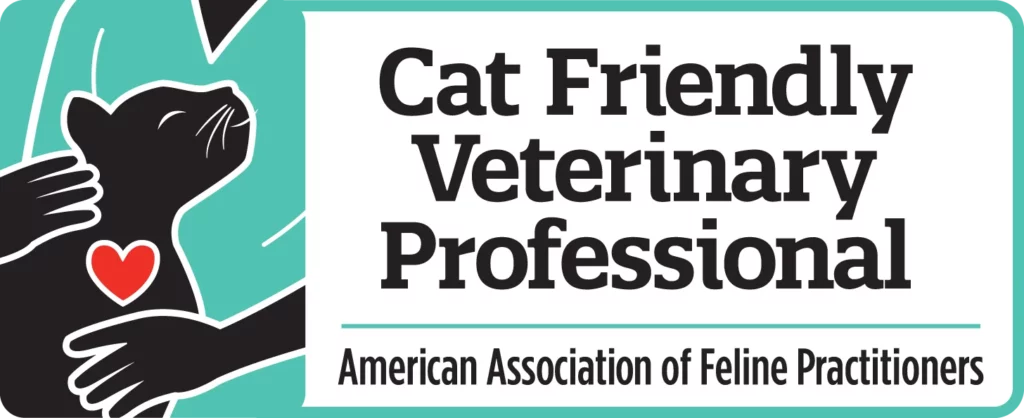While I talk about this topic from a scientific standpoint, this post gets a little NSFW at times given that we’re talking about reproductive behaviors in animals. You have been warned.
June is Pride month and many of us humans are celebrating our own identities or those of people we care about. Even if you’re not part of the LGBTQ+ community yourself, it’s an important time as LGBTQ+ individuals still face significant discrimination and are at an exceptionally higher risk of being victims of violent crime.
Now, my blog and business are cat focused so you may be wondering how Pride (or Purr-ide, to use the cat centric term) ties into cats. That leads us to the topic of today’s post: gay cats.

To write this blog post, I spent way more time reading articles on homosexuality in cats than I ever thought I would. My search history now includes terms such as “homosexual behavior in cats” and “can cats be lesbians.” It’s been a strange day, let me tell you. But before I share my findings, let’s take a step back and make sure we are all on the same page as to what we’re talking about.
Behavior vs. Identity
Almost every source I looked at (which are listed at the bottom and linked throughout the post) started out by separating identity and behavior. Sexual identity is how one sees oneself and who they are attracted to. Gender identity is whether someone views themself as male, female, both, neither, or something else entirely.
As you can probably assume from definitions that rely entirely on how one sees themselves, it’s going to be pretty hard if not impossible to measure this without asking the cat directly. As chatty as some cats are (my own sweet Zoloft included!), they can’t really tell us how they identify.
We can’t really know what a cat’s sexual orientation or gender identity is as we can’t ask them about attraction or identity. Of course, cat parents are free to think of their cat as whatever orientation they want. The cat likely doesn’t care one bit so if you think your cat is gay, you are free to label them as such! Just know that technically we can’t fully know what’s going on in their cute little brains.
Now, this would be a pretty disappointing blog post if things were to end there. Thankfully, that’s not the whole story. We can look at behavior as behavior is observable. We can answer the question, “Do cats engage in homosexual behavior?” That’s a slightly different question than “Are cats gay?” but that subtle difference makes a question we can’t answer become suddenly very answerable.
Homosexuality In Other Species
Let’s start out by taking a broad look at homosexuality in non-human animals. For those who think homosexuality is unnatural, there are hundreds of species of animals that have demonstrated homosexual behaviors according to possibly my new favorite book, Biological Exuberance: Homosexuality and Natural Diversity by Bruce Bagemihl. Homosexuality has been observed in bighorn sheep, flamingos, gorillas, and whales among many, many others.
In fact, there’s an entire species of lizard that is all female. The whiptail lizard has only females and reproduces asexually. This has led to the nickname “lesbian lizards,” though “ace lizards” may be a bit more accurate.
The animal queerness doesn’t stop there. There are even trans animals out there. While the term “sex change” is a horribly outdated way of referring to a person undergoing gender-affirming care, some species will literally change their sex in certain situations. Again according to Biological Exuberance (seriously, go read it), some animals will change which gametes (sex cells used for reproduction) they produce or even fully change sex organs based on their environment or other factors.
Similarly, and before we get back to cats, drag is a pretty common tactic among many species in the animal kingdom. Some species may partially imitate members of a different sex or they may completely disguise themselves as being a different sex. Animals don’t limit themselves just to appearance based drag, either; Male garter snakes will make themselves smell like female garter snakes, resulting in sexy time with other male snakes. Personally, I think setting up a Tinder profile would be an easier way to achieve that, but to each their own.
Gay Cats
While all that is interesting, we’re here to talk about cats. Have we observed homosexual behavior among cats?

Boy, have we ever! Cats big and little have been observed engaging in homosexual behaviors, although in some cases they may not be actual sexual behavior and instead are just affectionate behavior between friendly animals. Observations of homosexual behavior among house cats have even been documented in the scientific literature (Fox, 1965). While it is typically associated with unneutered male cats, it can be seen in neutered males as well.
In some rarer cases, female cats have been observed mounting other cats (Prescott, 1970). To give this a bit of context, when cats are doin’ it, the female cat will do a sort of sexy cat dance to entice the male and present herself to be mounted. The male cat will then climb on the female’s back, bite the female’s neck, and do the deed before quickly being expelled by the female. I am not using the term “expelled” lightly, either: Female cats will become pretty hostile toward males as soon as he’s finished.
All this is a long winded way of saying females mounting other cats is quite unusual and a reversal of what we’d typically expect, but it has been observed.
Speaking of mounting, according to numerous sources and studies of cat reproductive behavior, unneutered males will try to mount basically anything. This leads to one possible explanation of why cats may engage in homosexual behavior: sexual frustration. In an experiment by Hagamen and colleagues (1963), male cats who had not been neutered were observed after being separated from female cats in heat and placed in an area with… furniture and rabbits. The male cats tried to mate with both rabbits and inanimate objects. Interestingly, when male cats had more, as the authors put it, “experience” with female cats in heat prior to this experiment, they were less likely to try to seduce the rabbits and furniture.

A possible explanation of why cats may engage in homosexual behavior is that it’s a way to get out their sexual frustration, much like they did with the rabbits in the Hagamen study. The cats may be so ready to mate with anything that hey, another male cat will do just fine. This idea is supported by observations in other species which have found that by reducing the number of females in a population, males of the species will more frequently attempt to mate with other males (Bonnet et al, 2016).
However, in analysis of their own research on feral cats, Akihiro Yamane (2006) discusses a few other possible explanations for why male cats will be seen mating with other cats. One that Yamane and other researchers (Michael, 1961) noted is that homosexual behavior may be territory related, though Yamane puts forth other potential explanations including practicing for future sexual encounters (much like how playing may hunting practice), reducing sexual encounters between sexual competitors, and confusing a male cat for a female cat in heat. Based on their findings, practice encounters and identity confusion seem unlikely in the feral cat populations studied by Yamane, but the other explanations may be more viable reasons.
What Heterosexual Behavior Can Tell Us
Regardless of the reasoning behind the sexual encounters, cat reproductive strategies differ greatly from that of humans. It’s more typical of female cats who are in heat to go find many, many tomcats (unneutered male cats) to mate with. In fact, even within the same litter, there may be multiple fathers.

This strategy may help prevent aggression from male cats toward the female’s kittens. Because the kittens could be their offspring, the tomcats are less likely to try to kill the kittens in an attempt to prevent the female from focusing her resources on kittens from another male.
Because of this reproductive strategy, it’s not typical that cats would pair bond for life like many humans do. More typically, females will live in loose association with other female cats (often ones they are related to) and help each other raise their kittens. There may be male cats that wander in and out or that stick closely to one colony, but they’re usually not sticking with one other cat for life if there are multiple females around.
TL;DR: Cats are swingers.
This explains why most studies on cat behavior focus on singular encounters and why you’ll notice above I didn’t talk about long term pairs of cats in homosexual pairings. We wouldn’t expect to see such pairings in heterosexual cats so seeing homosexual pairings is even less likely. That’s not to say it can’t or hasn’t happened, but it’s not typical of cat behavior.
Anthropromor-what?
Hopefully by this point you’ve learned a bit about cat behavior, but I’d like to end on something that I think is just as important that I want you to take away from this blog.
Cat social behavior and reproductive behavior is a pretty complex topic and, as you probably picked out, trying to apply human social concepts to cat behavior doesn’t always work out perfectly. It’s extremely difficult for us to truly be able to label cats as having a particular sexual orientation. Even observable same-sex sexual encounters between cats are difficult to interpret as they may not fully be due to sexual attraction.
By labeling our cats as having a sexual orientation like we do in humans, we’re engaging in something called anthropomorphism. I’ve mentioned this concept before in previous blog posts, including one about whether or not cats are psychopaths (they’re not). Anthropomorphism is where we attribute human qualities to a non-human. It can be something innocent like looking at your cat as being gay or it can be something that has more sinister consequences.
Many people interpret their cat’s actions as being out of spite or as being vengeance for something they did. In most cases, cats are just being cats. Whether it’s hu… err, mounting whichever cat (or particularly attractive couch or rabbit) may be nearest or nibbling on your houseplant, your cat probably doesn’t have the same thought pattern you do about the behavior.
You’ll be much happier with your cat by not trying to think of them as little humans (or dogs) and trying to find human reasoning for their behavior. Plus, you’ll be better able to figure out how to address unwanted behaviors successfully. Much like how everybody wins by celebrating differences between people, humans and cats win by recognizing and celebrating the differences between our species.
If you’re looking for the book I fanboyed on this whole post or more information on this topic, Biological Exuberance or Homosexual Behavior in Animals are both a great read!
Cat have behavior problems and need help?
Sources:
Excited Cats article “Can Cats Be Gay, Bisexual, Or Lesbian?“
The Univeristy of Melbourne: Lesbian Lizards
Baghemihil, B. (1999) Biological Exuberance: Homosexuality and Natural Diversity .
“Queer Lions? The King of Beasts Are Often Queens” by David Chambers
Fox, M. (1965). New Information On Feline Behavior, Modern Veterinary Practice (46).
Prescott, R. (1970) Mounting Behavior In The Female Cat, Nature (228).
Hagamen, W., Zitzmann, E., & Reeves, A. (1963). Sexual mounting of diverse objects in a group of randomly selected, unoperatedmale cats. Journal of Comparative and Physiological Psychology, 56(2), 298–302.
Yamane A . 2006. Frustrated felines: male-male mounting in feral cats. In: Sommer VVasey PL, editors. Homosexual behaviour in animals: an evolutionary perspective. Cambridge (UK): Cambridge University Press. p. 172–189.
Bonnet X., Golubović A., Arsovski D., Đorđević S., Ballouard J., Sterijovski B., Ajtić R., Barbraud C., Tomović L. (2016) A prison effect in a wild population: a scarcity of females induces homosexual behaviors in males, Behavioral Ecology, 27(4), Pages 1206–1215, https://doi.org/10.1093/beheco/arw023
Michael, R. P. (1961). Observations Upon the Sexual Behaviour of the Domestic Cat (Felis Catus L.) Under Laboratory Conditions, Behaviour, 18(1-2), 1-24. doi: https://doi.org/10.1163/156853961X00259
Turner, D. and Bateson, P. (2014) The Domestic Cat: The Biology of its Behaviour, Third Edition. Cambridge (UK): Cambridge University Press.










